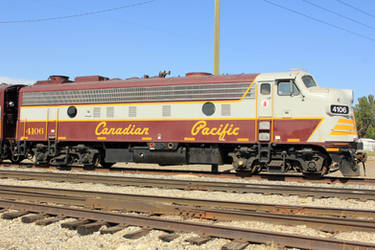ShopDreamUp AI ArtDreamUp
Deviation Actions
Suggested Deviants
Suggested Collections
Description
The Jefferson St. Bridge is one of six movable bridges in Joliet, Illinois. While Chicago may be more famous for its bridges, Joliet is distinguished in that all of its movable bridges are opened many times each day to allow barges to pass on the Des Plaines River. There are three types of bridges represented in Joliet. The Ruby St. (IL 53) bridge is a trunnion bascule, the same as most Chicago bridges. The Rock Island railroad bridge is a vertical lifting span, seen here. [link] The other four are the largest remaining group of Scherzer rolling-lift bridges (Chicago has one, Cermak Rd. at the Chicago River, and four railroad spans that no longer open). Designed by Chicago-born structural engineer William Scherzer, the rolling-lift bridge is in many ways superior to existing trunnion bascule designs. Instead of a rotating shaft within a bearing, the movable span is supported by a curved rocker quadrant (center of image) like a rocking chair. The quadrant rolls along a horizontal bearing plate (bottom) like a wheel, the protruding knobs on the bearing plate engaging holes in the quadrant to prevent slipping. The machinery is located on the movable span above the road deck. The main drive shaft (the "axle" of the "wheel" formed by the rocker quadrant) ends in a pinion gear. This engages a stationary horizontal rack to pull the bridge open. The counterweight consists of a concrete block above the roadway. (The hose-like lines in the center are the power cables for the bridge machinery).
The advantages of the Scherzer design include increased side clearances (the bridge moves toward the shore as well as rotating upwards); the lifting machinery, counterweight, and all moving parts are above ground and easily accessible, unlike a bascule bridge, where they are beneath the bridge deck; and the bearing plate supports the bridge's weight more evenly. The last advantage was dramatically demonstrated a few years ago during the renovation of Chicago's Michigan Ave. bascule bridge. The upper deck of the double-deck bridge was being partially removed when the locking mechanism, strained by the out-of-balance leaves, failed. One of the leaves sprang open, throwing a construction crane almost a hundred feet and killing its driver. The impact of the conterweight hitting the stops also knocked the bridge off of its trunnions, and only by luck was it prevented from crashing back into the river.
Camera: Canon AE-1 SLR (35mm)
Lens: Canon type FD (fixed, 50mm)
Film: Ilford XP-2 Monochrome (ASA 400)
Exposure: f16 at 1/250.
Paper: Ilford MultiGrade IV RC (8"x10")
Location shot
For more information on this bridge, and access to other interesting works of engineering, visit the Historical American Engineering Record, NPS, US Dept. of Int. [link]
The advantages of the Scherzer design include increased side clearances (the bridge moves toward the shore as well as rotating upwards); the lifting machinery, counterweight, and all moving parts are above ground and easily accessible, unlike a bascule bridge, where they are beneath the bridge deck; and the bearing plate supports the bridge's weight more evenly. The last advantage was dramatically demonstrated a few years ago during the renovation of Chicago's Michigan Ave. bascule bridge. The upper deck of the double-deck bridge was being partially removed when the locking mechanism, strained by the out-of-balance leaves, failed. One of the leaves sprang open, throwing a construction crane almost a hundred feet and killing its driver. The impact of the conterweight hitting the stops also knocked the bridge off of its trunnions, and only by luck was it prevented from crashing back into the river.
Camera: Canon AE-1 SLR (35mm)
Lens: Canon type FD (fixed, 50mm)
Film: Ilford XP-2 Monochrome (ASA 400)
Exposure: f16 at 1/250.
Paper: Ilford MultiGrade IV RC (8"x10")
Location shot
For more information on this bridge, and access to other interesting works of engineering, visit the Historical American Engineering Record, NPS, US Dept. of Int. [link]
Image size
1036x1451px 674.64 KB
© 2004 - 2024 Sylderon
Comments6
Join the community to add your comment. Already a deviant? Log In
XP2 is a Chromogenic film, it's black and white but it's processed in C41 colour chemicals. Tri-X is great, unfortunately I heard Kodak were going to discontinue. Pick up a roll of Ilford Delta 400, or Kodak T-Max 400 and give them a try.

































